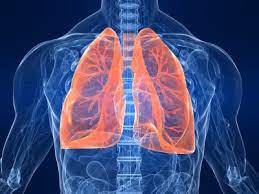In the pursuit of maximizing the benefits of physical exercise in minimal time, researchers from Japan have delved into the realm of sprint interval training (SIT), shedding light on its efficacy in improving physiological responses and overall well-being. Led by Dr. Takaki Yamagishi and Professor Yasuo Kawakami from Waseda University, the study, published in the Medicine & Science in Sports & Exercise journal, presents compelling evidence on the optimal protocols for SIT.
SIT, characterized by bursts of intense exercise interspersed with brief rest periods, has gained attention in sports physiology for its potential to enhance athletic performance and health outcomes. However, the nuances of structuring SIT protocols, particularly concerning the duration of exercise and rest, have remained a subject of investigation.
The team of researchers embarked on a quest to unravel these intricacies by conducting experiments with healthy human volunteers. Their study compared two sprint interval exercise (SIE) protocols, matched for total sprint duration and sprint-to-rest ratio, to elucidate their effects on physiological and metabolic responses.
The findings unveiled a notable disparity between the two protocols: SIE20, consisting of two 20-second sprints with 160-second recovery, outperformed SIE10, which involved four 10-second sprints with 80-second recovery. Despite both protocols significantly increasing whole-body and peripheral oxidative metabolism, SIE20 demonstrated greater effectiveness in peripheral oxidative metabolism. This difference underscores the importance of sprint duration and recovery intervals in optimizing SIT outcomes.
Dr. Yamagishi emphasized the practical implications of their research, stating, “In today’s fast-paced world, time constraints often deter individuals from engaging in regular physical activity. However, our study showcases that these exercise modalities can be completed in less than 15 minutes while offering substantial health benefits.”
Moreover, the study addresses critical research gaps in SIT, particularly regarding the effects of minimum sprint duration and repetitions on aerobic and metabolic responses in humans. By providing insights into low-volume SIT, this research paves the way for refining training programs and exercise regimens to suit modern lifestyles.
Looking ahead, Dr. Yamagishi expressed optimism regarding the integration of their findings into exercise guidelines proposed by leading organizations. He envisions future studies building upon their research to establish a comprehensive understanding of the dose-response relationship between exercise volume or intensity and training adaptations.
As the world continues to prioritize health and fitness amidst bustling routines, the insights gleaned from this study offer a beacon of hope for individuals seeking efficient yet impactful exercise strategies to enhance their well-being.
Source: Medicine & Science in Sports & Exercise journal
In conclusion, the study conducted by Dr. Takaki Yamagishi and Professor Yasuo Kawakami underscores the significance of optimizing sprint interval training protocols for maximizing health benefits in minimal time.











